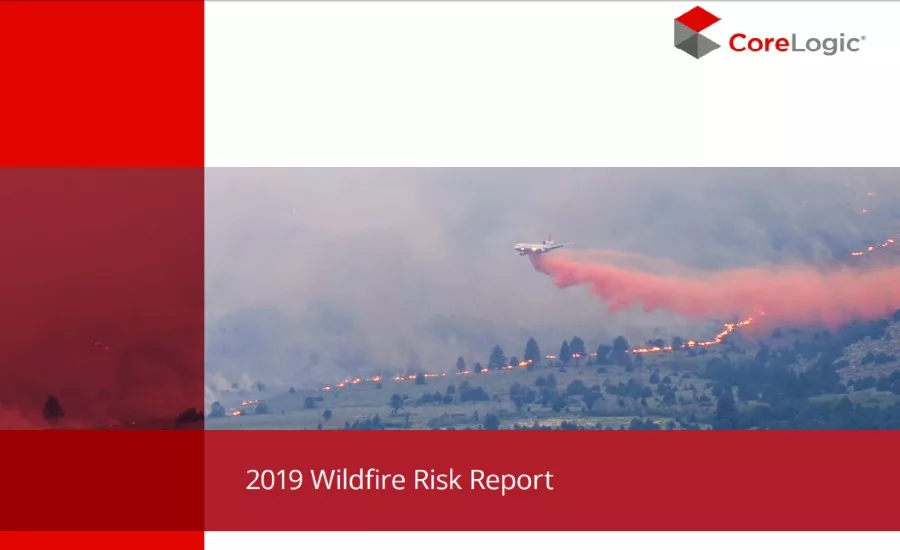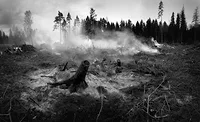2019 Wildfire Risk Report | CoreLogic

Over the past several years, the United States has experienced record-breaking wildfires. In 2018 alone, 8,767,492 acres burned, roughly equivalent to the area of 74 of the 75 largest cities in the United States combined. This is the sixth highest total since modern historical records began in the mid-1900s.
2004 was the first time over 8 million acres burned in one year. During the next 14 years, more than 8 million acres burned annually another eight times, making nine of the last 14 years the highest annual totals of burned wildfire acreage. A decadal comparison of burned acreage shows that over the last 20 years there has been a shift towards increased burned acreage. In that same timeframe, larger and more devastating wildfire events have occurred.
Wildfire is a unique peril because the level of damage is often binary – a home is either left untouched by the fire or a total loss occurs. A patchwork of devastation occurs as fires pass by some properties indiscriminately while surrounding homes are reduced to ash. Unlike flooding or hail, it can and often does result in a 100% loss of the structure. Post-event studies have shown that structural hardening increases a home’s resistance to fire, but all too often luck seems to play a part, too.
There is no state that is completely free from wildfire risk, but historic wildfire data indicates that the 13 Western states are the most commonly affected and have an expectation of property losses due to wildfire.
The 2019 CoreLogic Wildfire Risk Report provides insights into single-family and multifamily residential properties at risk of damage from wildfires in the United States. The 13 states in this report not only experience the greatest amount of acreage burned but also the most severe and devastating wildfire events when loss of life and property damage are considered. They also possess the highest probability of property loss due to wildfire. These states are also notable for having substantial wildfire acreage burned in both 2018 and previous years.
This report provides an analysis of the properties at risk of a destructive wildfire event and the associated reconstruction cost value (RCV) for homes in the 13 Western states. The high density of homes located in areas that are susceptible to wildfires and the continuing expansion of development into lands prone to wildfires only increases the threat of future catastrophic events and the possibility of billion-dollar losses.
The 2019 CoreLogic Wildfire Risk Report evaluates:
- The combined number of single-family residences (SFRs) and multifamily residences (MFRs) at risk of wildfire damage by state.
- The reconstruction cost value (RCV) for these homes.
- Notable wildfires of the past few years and their associated losses.
A review of the past few years reveals not only a continuation of the intense fires and associated destruction in the United States but an escalation of these events. Looking specifically at California, 2017 and 2018 were responsible for more wildfire-related property damage than the state has experienced in any two consecutive years of its history.
Looking to the future of wildfire activity in the United States, the continuing presence of the factors responsible for recent wildfires are an ominous indicator that the coming years could see more of the same.
CLICK HERE to view the full 2019 Wildfire Risk Report and download a PDF version.
Looking for a reprint of this article?
From high-res PDFs to custom plaques, order your copy today!





